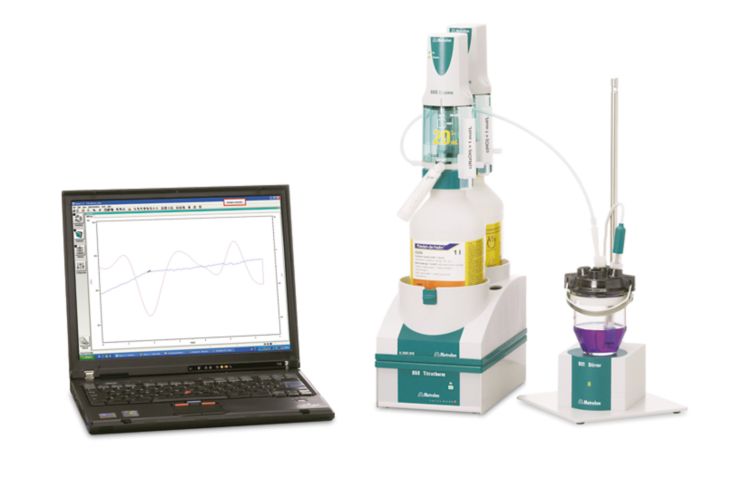Fertilizers are applied in the agricultural sector to provide more essential nutrients to growing plants. The so-called «NPK» fertilizers provide such nutrients to plants with its three main components (N – nitrogen, P – phosphorous, K – potassium). In fertilizers, nitrogen is mainly provided in three forms: as ammonium nitrate (NH4NO3), ammonia (NH3), and urea (H2NCONH2). Due to the different physical and chemical properties, uptake and release kinetics, mixtures of the nitrogen-providing compounds are used. Using such mixtures reduces the problem of fertilizer burns on plants, caused by an excess of nitrogen.
Determination of the individual nitrogen-contributing components is often laborious work. Thermometric titration offers the possibility to rapidly determine the amount of ammoniacal nitrogen and urea nitrogen in a single titration using sodium hypochlorite as titrant.
This application is demonstrated on two different solid NPK fertilizers. For the analysis, stock solutions of the solid fertilizers are prepared. The solid fertilizers are weighed accurately into a volumetric flask and dissolved in warm water.

The analysis is carried out with an 859 Titrotherm equipped with a Thermoprobe. To avoid handling chemicals manually, all solutions are automatically dosed using an 846 Dosing Interface.
The titration is based on the reaction between sodium hypochlorite and ammonium nitrogen and urea, respectively. Bromide is used as a catalyst for the reaction. As urea reacts more slowly with hypochlorite than ammoniacal nitrogen, two endpoints are obtained.
Prior to the titration, the sample is pipetted into the titration vessel. All required auxiliary solutions are dosed automatically, and the vessel is filled up with deionized water to a total volume of 50 mL. Afterwards, the solution is titrated until after the second exothermic endpoint with sodium hypochlorite.
Titration curves with two endpoints are obtained if the sample includes ammonium and urea. One exemplary titration curve is shown in Figure 2. Depending on the urea amount in the sample, additional spiking of the sample can improve the detection of urea, and ensures that a second endpoint is found.
| NPK 17-8-10 | NPK 15-15-15 | |
|---|---|---|
| w(NAmmonia) / % | 11.31 | 11.98 |
| s(rel)Ammonia / % | 0.70 | 0.31 |
| w(NUrea) / % | 4.51 | 2.03 |
| s(rel)Urea / % | 0.69 | 2.35 |
Thermometric titration is a very fast and accurate method to determine the ammonium and urea content in fertilizers in one titration. The method allows a differentiation of these two components with a determination time of less than 3 minutes.
Internal reference: AW TI CH1-1299-112019
 Share via email
Share via email
 Download PDF
Download PDF